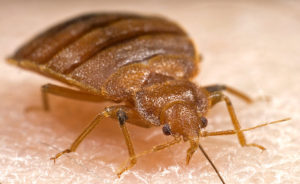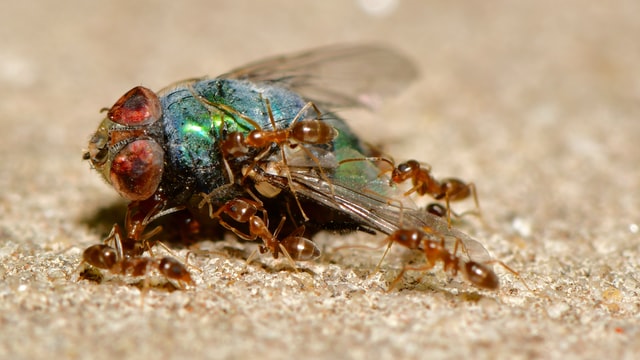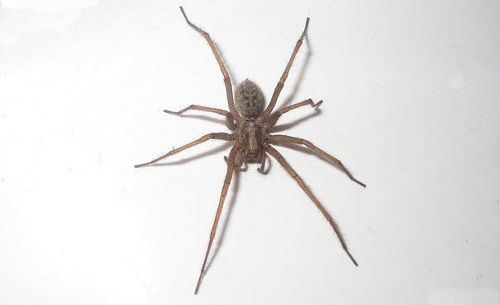
You must have seen different spiders in your house, but do you know their names? There are over 600 species of spiders in the UK and you may have encountered most of them one way or another. Some species prefer to live outside in nature, while others find your home to be the perfect place to live. Here are some of the most common spiders you would find in your British home.
False Widow Spider
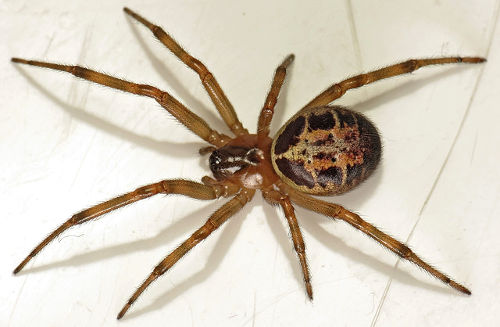
Name: Steatoda nobilis, or also known as noble false widow and referred to as the false widow.
Appearance: Body length without legs of adult female is between 6-11 mm, while in males it ranges from 4-9 mm. The brown bulbous abdomen is with a cream-coloured marking which is often compared to the shape of a skull. Legs are reddish-orange.
Life Span: Females can live up to six years, while as per usual – males don’t live long after mating. His total life span is about 12 to 18 months total.
Habitat: Native to Madeira and the Canary Islands from where it allegedly spread to Europe. Arrived in England before 1879, perhaps through cargo ships. From its origin, we understand this spider usually prefers southern climates and warmer settings, nonetheless, its range appears to be expanding northwards.
Danger Level: In England this is one of the few local spider species which is known to cause pain to humans via its bite. However, symptoms of these bites are mostly similar to a bee or wasp sting, without any long-term effect.
Giant House Spider
Name: Eratigena atrica
Appearance: The giant house spider is between 12 – 18mm in length, with the females being bigger. Generally dark brown in colour with earthy tones of light brown and yellow or muddy red. What stands out is their hairy abdomen, palps and legs.
Life Span: The average life of the male spider was 33.9 days and 116.5 days for the female.
Habitat: Originally from north western Europe, this spider used to live mostly in caves or under rocks in dry forests, but today is a common spider in people’s households.
Danger Level: Harmless to humans or pets, further more this spider would rather escape than head on to battle.
Domestic House Spider

Name: Tegenaria domestica, as known as the barn funnel weaver in North America and the domestic house spider in Europe.
Appearance: Females are about 8 to 12 mm in size, while males are slightly smaller between 6-9 mm. Their body is elongated, with a flattened and straight abdomen. Body to legs ratio is typically about 50-60%. They are typically dark orange to brown or beige greyish, with a usual characteristic of striped legs and two dull, black stripes along the length of the cephalothorax.
Life Span: Indoor females usually live for over one or two years on the same web, while some may survive as long as seven years in rarely disturbed places. Outdoor females die when cold weather sets, while males rarely live for over a year.
Habitat: Domestic house spiders range worldwide from as north as Sweden to as south as Greece in Europe. Some also inhabit parts of Western Asia. They can survive longer in undisturbed sheltered places such as attics, basement or cellar parts, storage rooms, etc.
Danger Level: T. domestica rarely bite, if they do – it is painless. They are not aggressive at all and usually retreat when confronted. It’s easy to remove these spiders without killing them, as they are usually cooperative.
Daddy Long Legs Spider

Name: Pholcidae, commonly known as cellar spiders.
Appearance: Fragile arachnids, 2–10 mm in length with legs which may be up to 50 mm long. Often mistaken with the harvestmen (Opiliones) or crane flies.
Life Span: Around six and a half months.
Habitat: Pholcids can be found in every continent in the world, except Antarctica of course, where it’s far too cold for them to survive. These spiders hang inverted in messy, tangled webs constructed in dark and damp spaces. Such as caves, under rocks and loose bark, inside abandoned mammal burrows and undisturbed areas in buildings, such as cellars. Pholcids are also commonly found in warm, dry places such as household windows and attics.
Danger Level: There are far too many misconceptions surrounding the Daddy long legs spiders. All misconceptions aside – these spiders are harmless. Their fangs are too small to puncture human skin. Also, they probably would not attempt to bite at all.
Cupboard Spider
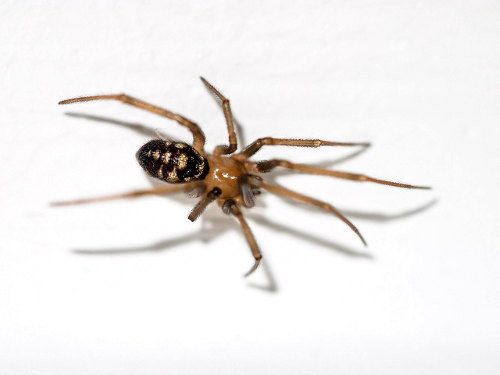
Name: Steatoda grossa
Appearance: Similarly to the black widows, the females are 6-10.5mm in length, dark coloured with a round bulbous abdomen. Their colouration ranges from purplish-brown to black with light-coloured markings. Unlike black widows and other species, the cupboard spider doesn’t have a bright pattern or other bright markings.
Life Span: Females can live up to six years, while the typical lifespan for the male is about one – one and half years. This is due to the fact that males often die shortly after mating.
Habitat: Found in many parts of the world, including all three coasts of North America, in Australia, New Zealand and in Europe. They can go several months without food, but only if they have access to water. These spiders construct cobwebs and as other web-weavers, they have poor eyesight depending mostly on vibrations coming through their webs.
Danger Level: Medically significant in humans, but minor with no long-term effects. Intrusions by large creatures will cause these spiders to flee, hence they are not aggressive. That being said most injuries to humans are defensive bites or honest mistakes. Symptoms of cupboard spiders are general malaise for a couple of days which may include blistering where the bite is, muscle spasms, pain, fever and sweating.
Hopefully, you can distinguish them now and know which ones to be especially careful about. If you notice a spider infestation you cannot deal with on your own, call Panther Pest Control and a spider exterminator will be at your door right away!


